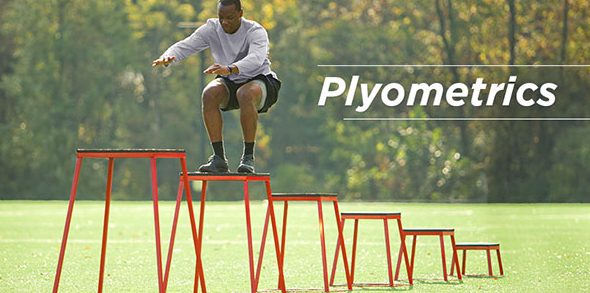Plyometrics: The Key to Jumping Higher
Plyometrics, or "plyos," are a game-changer when it comes to boosting your vertical jump, improving speed, and enhancing overall explosiveness. In this post, we’ll dive deep into the world of plyometric training, explaining what it is, how to use it effectively, and why it’s critical for vertical jump improvement.
What Are Plyometrics?
Plyometrics are exercises that focus on fast, explosive movements to develop power and strength. Traditionally used by athletes to enhance sports performance, plyos have gained popularity among fitness enthusiasts for toning muscles and boosting overall agility.
Common Misconception: Plyos aren’t just for jumping! They’re used in various activities like:
Jumping higher
Running faster
Throwing harder
Hitting with more power
Why Are Plyometrics Important for Vertical Jumping?
Plyos are particularly effective for vertical leap training because they develop the explosive energy needed to propel you off the ground. The dynamic movements train your muscles to exert maximum force in minimal time, which is key to jumping higher.
How to Use Plyometrics to Jump Higher
If your goal is to increase your vertical jump, a well-rounded plyometric routine should focus on both lower body and upper body exercises. Here's why:
Jumping Involves the Whole Body:
Jumping isn’t just about your legs. Your arms, core, and even your coordination play a significant role. Arm swings and core engagement contribute to generating upward momentum.
Lower Body Plyometrics
These exercises are essential for building explosive leg power:
Box Jumps: Jump onto a box or platform, focusing on height and form.
Depth Jumps: Step off a box and immediately jump as high as possible upon landing.
Broad Jumps: Leap forward as far as you can, emphasizing distance and control.
Upper Body Plyometrics
While often overlooked, upper body strength can enhance your jump significantly:
Medicine Ball Throws: Focus on explosive overhead or chest passes.
Push-Up Variations: Incorporate clapping push-ups or plyo push-ups to develop explosive arm strength.
Full-Body Coordination Drills
Exercises like burpees and sprint-to-jump drills integrate both upper and lower body movements, improving overall explosiveness and control.
The Importance of a Balanced Approach
While lower body plyos may seem like the obvious focus for jumping higher, neglecting upper body and core training can limit your potential. Many athletes hit a plateau in their vertical jump because they overlook these smaller but impactful details, such as improving arm mechanics or strengthening their core.
Pro Tip: Arm motion generates upward force. Refining your arm swing technique can give you a few extra inches on your vertical leap.
Incorporating Plyometrics into Your Training
Plyometrics are most effective when integrated into a structured vertical jump program. Programs like Jacob Hiller’s offer tailored workout regimens that optimize plyos for vertical jump performance.
As you progress, pay attention to your technique, form, and weak spots. Small adjustments, like improving arm movement or refining your takeoff, can unlock significant gains in your vertical leap.
Conclusion
Plyometrics are an essential component of any vertical jump training regimen. By combining lower body power, upper body strength, and full-body coordination, you can maximize your explosive potential and reach new heights in your jump training.


